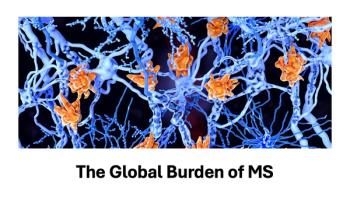
Healthcare executive compensation changes to watch
Managed care organizations may be the next target of value-based reimbursements, with bonus payments tied to the health of their company-and its members.
Healthcare dollars are tight, and payments to physicians and hospitals are increasingly being linked to health outcomes and patient satisfaction scores. There’s even a
It seems reasonable to assume that, at some point, this trend will reach payers, too.
Many companies already hold executives accountable for financial performance, but extending that accountability to the health of members may not be far away.
Humana Inc. announced in May 2016, in
“Our board’s organization and compensation committee made certain changes to our cash incentive program to align all leaders to our shared enterprise vision, one of which was the inclusion of consumer health metrics as a performance target,” says Mark Mathis, director of corporate communications for Humana. “Rather than a performance target based on the attainment of a single pre-established earnings per share (EPS) objective, the committee set 2016 incentive targets based 80% upon EPS and 20% upon certain pre-established consumer health metrics, to incentivize our executives to take actions to improve the health of our members.”
Humana executives failed to earn bonuses in 2015, according to the filing, partly because Humana intentionally set the bar high in order to reward its leaders only for exceptional performance.
New measures
The addition of a member health outcomes metric to executive bonuses is a roundabout way of also improving the cost of care and therefore financial performance.
“The consumer health participation performance metric, or CHP, focuses on increasing the levels of participation by our members in various programs and services proven to improve health outcomes and lower the cost of care,” Mathis says. “The committee selected five leading indicators of health outcomes to measure CHP performance … These were selected on the basis of being applicable to the medical lines of our business and the company’s overall business outcomes. Furthermore, they are closely aligned to the company’s strategic vision of improving the health of the communities we serve 20% by 2020, and by making it easier for people to achieve their best health.”
Accountability a key driver
KratzStephen J. Kratz, senior partner and head of the Health Insurance and Managed Care practice at Witt/Kieffer, says in spite of cutbacks across healthcare, he continues to see healthy growth in salaries and bonuses for healthcare executives across the board-particularly in high-level positions where the talent market is tight and significant premiums must be paid to attract the best candidates. But linking C-suite compensation to performance metrics is an expected progression as consumers who are being asked to carry a greater burden of their healthcare costs, Kratz says.
“There will be calls for increased accountability to justify generous salaries. This is especially true as organizational missions are geared toward ensuring the health of communities and populations and executives are charged with carrying out those missions,” Kratz says. “It also has to do with the increased transparency that exists in healthcare and the business world in general. Secrets are harder to keep and organizations are obliged to keep constituents informed about their finances and operations much more than in the past.”
Leadership doesn’t necessarily view this change as a bad thing, though.
“This is a natural outgrowth of the value-based, population health movement, and some organizations are experimenting with ways of incorporating quality-based performance metrics into executive compensation,” Kratz adds. “And I think executives themselves welcome this trend if the metrics are valid and reliable. However, there is still a long way to go to define these metrics and to pinpoint the ones that healthcare leaders truly have influence upon. So it’s a trend that is positive and should continue as health-based metrics become more reliable and meaningful.”
Actionable and aligned
Metrics must be set realistically and be tied to things that the executives can actually have control over, Kratz says, adding that he doesn’t think a move toward performance-based incentives will chase good executives away from healthcare.
Kwech“On the whole, people still get into healthcare for the reasons that they always have-to make a difference in the world, for one thing-and this won’t change,” Kratz says. “Good talent is never easy to find and retain, but executives will always want to be in this industry.”
Jenny Kwech, a senior manager at Deloitte specializing in executive compensation practices, says she has seen some movement around tying incentives and executive pay to efficiency and cost savings, particularly for executives who are able to innovative and increase new business.
“As a best practice, we advise all our clients that their incentives should be aligned with the overarching goals of the organization, Kwech says.
Other compensation changes
MorrisMitch Morris, MD, vice chair and global leader for the Health Care Sector at Deloitte, says while calls for increased accountability in healthcare may contribute to a desire to tie executive salaries to outcomes, consolidation is also a growing trend in healthcare. Healthcare organizations are consolidating and growing larger and, while their salaries may be large, they are generally in line with the size of the job at hand. Compensation must rise to match the growing demand on executives who are in charge of a $20 billion health system compared to a $200 million hospital, he says.
“The level of executive you need that can successfully manage that is very different,” Morris says. “Those rare individuals who can manage a large organization command a healthy compensation.”
Rachael Zimlich is a writer in Columbia Station, Ohio.
Newsletter
Get the latest industry news, event updates, and more from Managed healthcare Executive.






















































